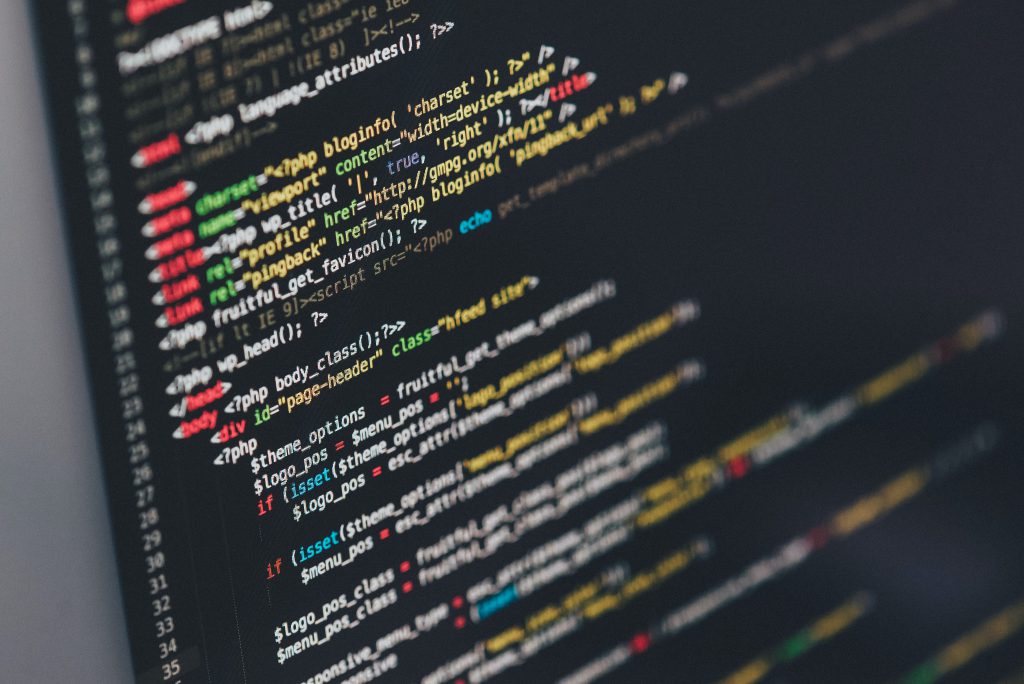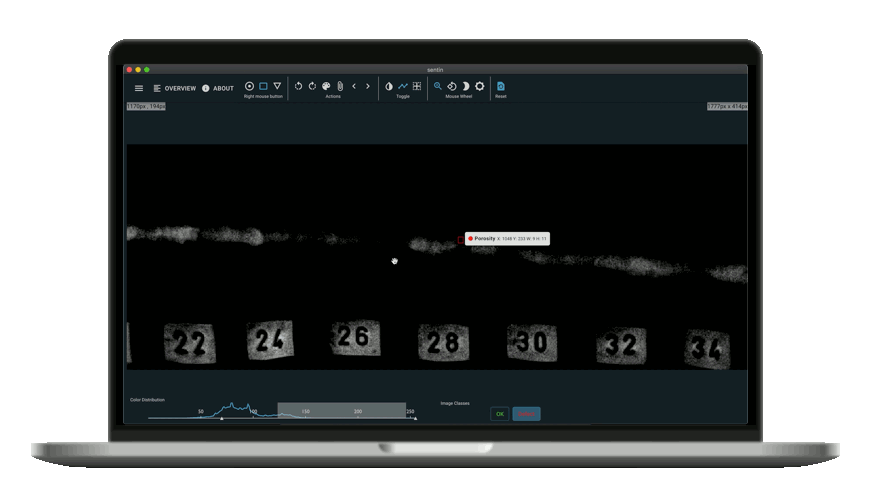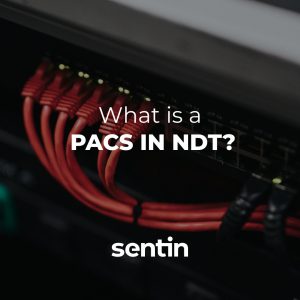We are happy to discuss the chances of NDE/NDT 4.0 in this meeting between Dr. Johannes Vrana (JV) from Vrana GmbH and Maximilian Topp (MT) from sentin GmbH.
The research, training and consulting services of Dr. Johannes Vrana deal with the new technologies in non-destructive testing (NDT). His scientific publications and his YouTube channel deal with cutting edge topics of NDT/NDE and present the complex subjects in an understandable way. He is considered an absolute expert for NDT 4.0 and NDE 4.0 both on a national and international level.
Table of Contents
How important is digitisation for NDE/NDT?
MT: You have been working on this issue since the early 2000s, both nationally and internationally. Was there a key moment when you recognized the potential of digitization for NDT and NDE?
JV: One of my key moments was in a digitization project at Siemens. We needed the results of NDT in recent years for this. To be able to evaluate these digitally, someone had to type in the ultrasound protocols of the last few years. NDT 4.0 is a name for new NDT developments, such as block chain, quantum computer, AI, digital protocols and digital processes.
MT: If you look around LinkedIn for example, you are one of the top contacts for NDE 4.0. How exactly do you define NDT/NDE 4.0?

JV: The answer to this question will certainly change significantly in the coming years, but at the moment I see three major fields. Firstly, the possibility of using digital processes to support the inspector. These should serve as external help on the spot. Thus, support from the office is possible without having to travel a lot. The second one is to use NDT to look into the interfaces and thereby gain a lot of data. If you give this data back to the industry on a standardized interface, it can be evaluated there with statistical methods and used for e.g. feedback loops, improvement of design, product and production. The third major field is the interaction between man and machine. By means of the recorded data, the inspector can demonstrate the value of the inspection.
What opportunities and potentials arise from NDT/NDE?
MT: Before we get in deeper: What do you think are the 3 most important opportunities through NDE 4.0?

JV: One chance is for the world to realize how valuable the results of NDT actually are. Everyone knows the value of radiologists, for example. There is a fear that material flaws will be found, but NDT helps to find flaws and thus provides more security. There is also a chance that the public and industry will know more about NDT and recognise what a valuable procedure NDT is.
MT: We are mainly concerned with error detection in inspection processes using artificial intelligence (AI). Where do you see the greatest potential for AI in the NDE/DT 4.0 application?
JV: The results of an ultrasonic test can be evaluated with AI to provide the inspector with an aid. Not only are the individual results viewed, but AI can be used to identify long-term trends based on the entire recorded data. Likewise, added value can be created by large amounts of data if they are combined and run through an AI.
MT: Then let’s also talk briefly about the human factor. In the course of your work you have also dealt with the Probability Of Detection (POD) and the training of less experienced employees. How subjective is the process of evaluation and interpretation?
JV: Quite. It depends on the shape of people’s day and where their thoughts are at the moment. Nobody is perfect, but they are very adaptable. AI can be very helpful in repetitive processes. To do this, it must be implemented correctly in order to realize a much better POD as a tool than humans can. However, no mistake must be made in automation. This would be repeated over and over again if the programming is incorrect.
What does NDE/NDT look like in terms of readiness, fragmentation and international differences?
MT: Your company is also involved in consulting and the development of solutions in the NDE field. I have two questions about this:
The first question: Especially in Germany, for example, cloud technologies or certifications are an issue. How willing are your customers to adopt new technologies?
JV: Most people are afraid to use new technologies in a company or in an industrial environment. They always ask themselves whether the technology is really ready. Before a technology can be introduced, it has to be well developed. To be competitive in the international market we need new technologies.
MT: The second question is that technology often only becomes widely available through common standards. To what extent is the technology landscape of NDE and NDT still fragmented?

JV: NDT is extremely fragmented. Everyone has their own interface, but at some point you have to work together. Germany has the great advantage of a club culture. It tries to develop something together and to make progress. In working groups in the field of NDT, information models for NDT are developed, which can then be used by all companies and which can be further processed with AI tools.
MT: You also have a leading role in ASNT (American Society for Non-Destructive Testing) and DGZfP (German Society for Non-Destructive Testing). Do you see national and international differences in the movements around NDE 4.0?
JV: There are several committees for NDT 4.0 and NDE 4.0 where international exchanges take place. This allows experiences to be shared and thus disseminated and worked out together. One goal is to make the term 4.0 better known, to mark this as part of a larger movement. In Germany, NDT is seen more as a supporter of Industry 4.0 (NDT for Industry) and vice versa in America (Industry for NDT). Education and training on NDE is needed everywhere so that inspectors learn how to deal with the innovations and the advantages and problems are communicated.
How can NDE/NDT 4.0 be further advanced?
MT: The past shows that you can’t overburden companies with digitisation projects. Which 3 steps are necessary in the next 1.5 years to move further in the direction of NDE 4.0 and who do you have to convince?

JV: The first step is to gather information from the inspectors and the CEOs to disseminate the value of NDT to the individual companies. The second step is to work with the companies to determine the individual benefits and next steps. The third step is to help with implementation and provide training. In the end, everyone has to be convinced, but most importantly, top managers have to be convinced so that they want to digitize and thus sharpen their minds.
MT: What would you wish for to take this subject forward?
JV: I would like the companies to see that they have to work together. It’s all about networking, and that only works if everyone is doing what they do best. NDT should be seen as an important provider of data.

How can I use NDE/NDT 4.0?
About Dr. Johannes Vrana

CEO, NDE Research & Development
ASNT
Chairman German Section
Vice-Chairman ASNT Committee NDE 4.0
DGZfP
Chairman of Subcommittee Automated Ultrasonic Testing
DGZfP
Chairman of Subcommittee for Digital Interfaces
ICNDT
Chairman ICNDT SIG NDE 4.0
After and during his doctorate in physics at Saarland University (2008), Dr. Johannes Vrana built up his expertise in the field of NDT at Siemens. From 2015 – 2017 he was NDE Council Chairman there until he concentrated on building his own company. At the same time, he took on leading roles at DGZfP (German Society for Non-Destructive Testing) and the American ASNT.
His research is groundbreaking for the new technologies in NDT. His scientific publications and his work on various platforms such as LinkedIn inspire a broad audience.
We are happy to interview him for our blog and look forward to further collaborations.






